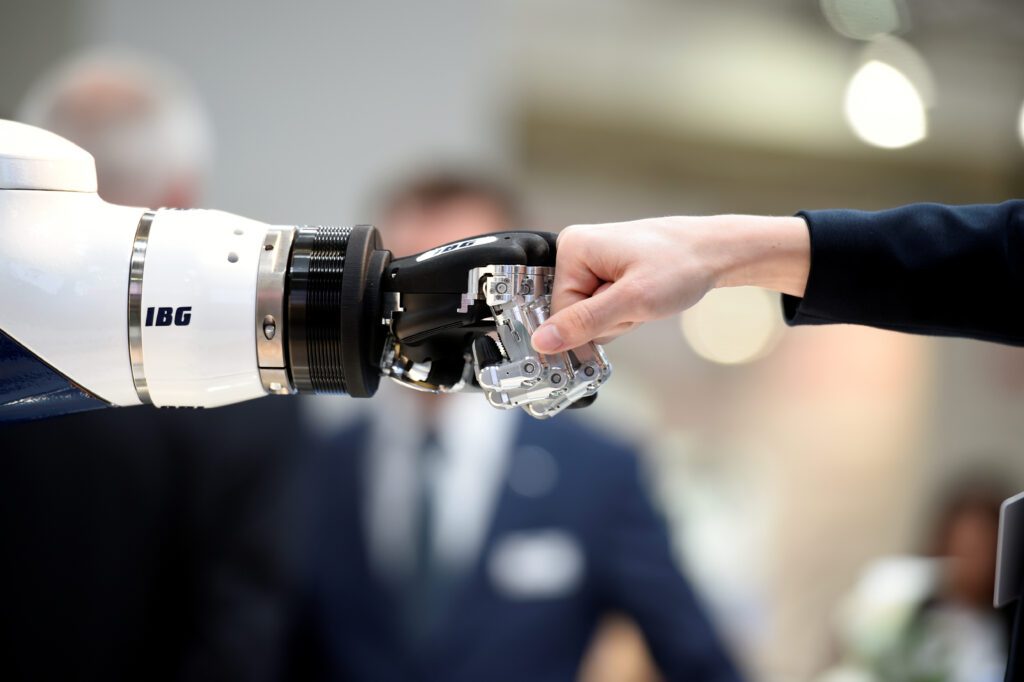AI, machine learning, and robotics have revolutionized business operations by optimizing processes, reducing costs, and increasing efficiency. AI refers to computer systems or machines that perform tasks requiring human intelligence. Machine learning enables businesses to analyze large amounts of data quickly and identify patterns and insights. It improves its own performance over time and is essential for gaining a competitive edge. AI-powered decision-making tools process vast data sets and provide recommendations, reducing time and effort. Robotics automates mundane tasks, leading to increased efficiency and productivity. These technologies enhance customer service, streamline operations, improve marketing and sales, detect fraud, eliminate human error and bias, optimize resource allocation, enable predictive maintenance, and speed up data processing. Embracing these technologies is crucial for businesses to thrive in the evolving digital landscape.
AI, Machine Learning, and Robotics: Transforming Business Processes and Increasing Efficiency
Introduction
In today’s technology-driven world, businesses are constantly seeking innovative ways to optimize their operations, reduce costs, and increase efficiency. The advent of Artificial Intelligence (AI), Machine Learning (ML), and Robotics has revolutionized the way businesses operate, offering unprecedented opportunities for transformation.
The Rise of AI
Artificial Intelligence refers to the ability of computer systems or machines to perform tasks that typically require human intelligence. AI encompasses a range of technologies, including Machine Learning and Robotics, which play a crucial role in enhancing business processes.
Machine Learning for Data Analysis
Machine Learning empowers businesses to analyze vast amounts of data in a short time, identifying patterns, trends, and insights that humans might miss. With the ability to learn from previous experiences, ML algorithms improve their own performance over time, making them indispensable for businesses seeking to gain a competitive edge.
Enhancing Decision-Making with AI
AI-powered decision-making tools leverage ML algorithms to process vast data sets, enabling businesses to make more informed decisions. By considering multiple factors and probabilities, AI systems can simulate outcomes and provide recommendations, significantly reducing the time and effort required for decision-making processes.
Rise of Intelligent Robotics
Robotics, as a subset of AI, has transformed various business processes by automating mundane and repetitive tasks. The integration of robots into manufacturing, logistics, and customer service operations, among others, has led to increased efficiency, reduced errors, and improved productivity.
Transforming Business Processes
The integration of AI, Machine Learning, and Robotics has had a profound impact on how businesses function. Here are some key areas where these technologies are driving transformation:
Improved Customer Service
AI-powered chatbots and virtual assistants are revolutionizing customer service by providing round-the-clock support and instant responses. Machine Learning enables these AI tools to learn from customer interactions, ensuring personalized and accurate responses, thereby enhancing customer satisfaction.
Streamlined Operations and Supply Chain
Machine Learning algorithms analyze historical data to optimize business operations, inventory management, and supply chain logistics. By forecasting demand, identifying bottlenecks, and enabling predictive maintenance, businesses can streamline processes, reduce costs, and minimize downtime.
Enhanced Marketing and Sales
AI and ML algorithms enable businesses to analyze consumer behavior, predict market requirements, and personalize marketing campaigns. By leveraging data patterns, businesses can target audiences with tailored recommendations, optimize pricing strategies, and improve customer conversion rates.
Risk Mitigation and Fraud Detection
AI-powered systems can detect anomalies, identify potential risks, and mitigate fraudulent activities in real-time. Machine Learning algorithms analyze vast amounts of data from multiple sources to uncover patterns that indicate fraudulent behavior, protecting businesses from financial loss and reputational damage.
Increasing Efficiency
The infusion of AI, Machine Learning, and Robotics has significantly increased efficiency in various business processes:
Eliminating Human Error and Bias
Robots and AI systems operate with precision and consistency, eliminating the potential for human error. By relying on data-driven algorithms, businesses reduce the risk of bias in decision-making processes, leading to fairer outcomes.
Optimizing Resource Allocation
AI and ML algorithms enable businesses to analyze historical data, identifying areas of resource inefficiency. By optimizing resource allocation, businesses can reduce waste, maximize productivity, and allocate resources based on actual demand.
Enabling Predictive Maintenance
Machine Learning algorithms can predict equipment failures based on historical data, enabling proactive maintenance. By identifying potential issues before they occur, businesses can avoid costly unplanned downtime, optimize maintenance schedules, and increase overall operational efficiency.
Faster and More Accurate Data Processing
AI and ML algorithms can process vast amounts of data in real-time, significantly increasing data processing speeds. Businesses can leverage this enhanced speed to obtain actionable insights promptly, enabling informed decision-making and staying ahead of the competition.
Conclusion
The integration of AI, Machine Learning, and Robotics has transformed the way businesses operate. From streamlining operations to enhancing customer service and reducing costs, these technologies have increased efficiency across various business processes. As AI continues to advance, businesses must embrace these technologies to stay ahead in a rapidly evolving digital landscape.
